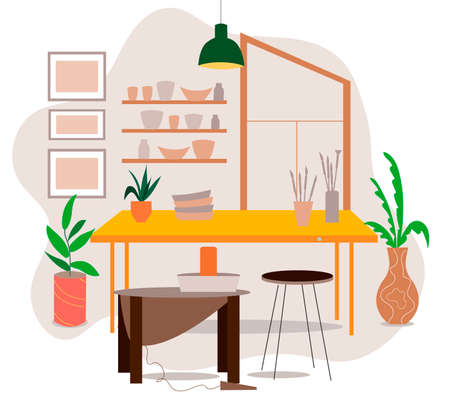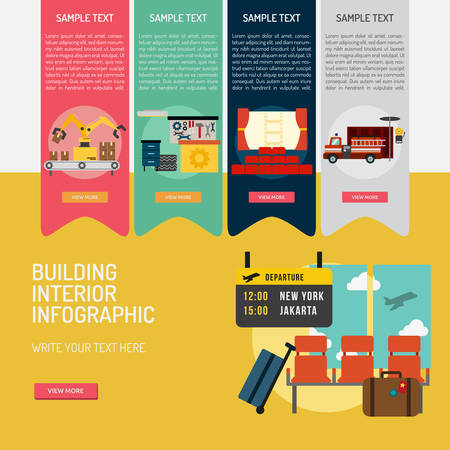Initial Consultation and Briefing
The journey of any interior design project in the UK begins with the initial consultation—a cornerstone moment for both client and designer. This first meeting is far more than a casual chat; it is an opportunity to build rapport, establish trust, and lay the groundwork for a successful collaboration. British designers typically approach this stage with a blend of professionalism and warmth, keenly listening to the client’s aspirations, lifestyle needs, and personal tastes. During this session, designers delve into the client’s vision while offering insight into what can be realistically achieved within the given space and budget.
Defining the brief is a collaborative process, ensuring every nuance—from spatial flow to preferred colour palettes—aligns with the clients expectations. Detailed discussions help to clarify practical requirements such as timelines, must-have features, and any heritage considerations unique to British properties. Importantly, this stage introduces the designer’s fee structure. Transparent conversations about design fees—whether fixed, hourly, or percentage-based—set clear expectations from the outset. Payment milestones are usually outlined here as well, typically starting with an initial retainer or consultation fee before progressing to subsequent stages of the project. By fostering open communication and clarity at this early point, both parties are empowered to move forward with confidence and creativity.
2. Concept Design and Proposal
The concept design phase is where creativity truly begins to flourish within the interior design process. At this stage, designers translate the client’s aspirations into tangible visual directions, crafting mood boards and preliminary layouts that set the tone for the entire project. This collaborative journey not only shapes the aesthetic but also establishes clear expectations regarding payment milestones in line with UK industry standards.
Mood Boards: Curating Inspiration
Mood boards are essential tools used by British interior designers to visually communicate a projects potential atmosphere. Drawing upon local inspirations—from classic Georgian motifs to contemporary London minimalism—designers assemble images, textures, and colour swatches that reflect the desired look and feel. This creative collage is then presented to clients for feedback and refinement, ensuring that the vision resonates on both a personal and cultural level.
Initial Layouts: Space Planning
Alongside mood boards, initial space planning layouts are developed. These floorplans outline furniture placement, flow of movement, and functional zones within the property. The approach prioritises both style and practicality—integral to British interiors—by maximising natural light, preserving period features, or incorporating bespoke storage solutions that suit UK living standards.
Key Deliverables at This Stage
| Deliverable | Description |
|---|---|
| Mood Board Presentation | Curated selection of imagery, materials, and colours reflecting the design concept. |
| Preliminary Floorplans | Initial spatial arrangements for furniture, fixtures, and fittings. |
| Concept Proposal Document | A summary outlining design intent, key inspirations, and projected direction for further development. |
Fee Stage & Payment Milestone Expectations
In keeping with standard practices across the UK, an interim payment is typically required upon delivery of the concept design package. This milestone payment secures continued commitment from both parties as the project transitions from conceptualisation to detailed design. It is common for this fee stage to represent approximately 20–30% of the total design fee, ensuring transparency and mutual trust throughout the engagement.

3. Design Development and Planning Submission
At this crucial stage, the initial design concept is refined into a detailed proposal that addresses both aesthetic aspirations and practical requirements. In the UK, this process demands meticulous attention to local regulations, building codes, and planning policies—particularly if your project involves listed buildings or properties within conservation areas. The design development phase typically includes the production of technical drawings, material specifications, and coordination with structural or services consultants as necessary.
Refining Design Details for Compliance
Every element, from spatial layouts to finishes, is reviewed to ensure compliance with UK Building Regulations and the standards set by local authorities. This may require consultations with planning officers or heritage specialists to pre-empt any issues. The aim is to create a scheme that not only delights visually but also meets all statutory obligations—an essential foundation for a smooth approval process.
Preparation of Planning Documents
Once the design details are confirmed, comprehensive documentation is prepared for planning submission. This typically includes site plans, elevation drawings, and supporting statements that articulate the intent and context of the proposal. Depending on the complexity of your project, these documents may also address aspects such as sustainability measures, access strategies, and neighbour impact assessments. Submitting accurate and persuasive planning documents increases the likelihood of swift approval by the local council.
Fee Stages and Payment Milestones
The fee structure at this stage often reflects the increased level of detail and specialist input required. Most interior designers in the UK operate on milestone payments: an initial portion is invoiced upon completion of developed design drawings, with a further payment due once all planning documents have been submitted to the relevant authorities. Transparent communication regarding fees ensures you remain in control of your investment throughout the process.
4. Sourcing and Procurement
Once the design concept is finalised, the next crucial stage is sourcing and procurement. This involves meticulously selecting furnishings, finishing materials, and bespoke pieces that align with the agreed vision. In the context of British interior design, there is a distinct emphasis on collaborating with reputable UK-based suppliers and artisans, ensuring authenticity, craftsmanship, and timely delivery.
Navigating British Suppliers
The process typically begins with a curated shortlist of options from trusted British brands—think iconic furniture makers from High Wycombe or contemporary lighting studios in Shoreditch. Designers may also recommend bespoke joinery crafted in Yorkshire or artisan textiles woven in Scotland to add unique character to your space.
Considerations for Lead Times
Lead times can vary significantly depending on whether you opt for ready-made or custom pieces. While some items can be delivered within two weeks, others—particularly bespoke commissions—may require up to 12 weeks or longer. Factoring in these timelines early ensures your project stays on track.
| Item Type | Supplier Location | Typical Lead Time (Weeks) | Payment Milestone |
|---|---|---|---|
| Standard Furniture | UK National Retailers | 2–4 | Upon Order Placement (50%) Balance on Delivery (50%) |
| Bespoke Joinery | Local Artisans (e.g., Yorkshire) | 8–12 | Deposit (30%) Midpoint Progress (40%) Completion (30%) |
| Finishing Materials (Tiles, Wallpapers) |
British Manufacturers | 2–6 | Full Payment Upfront |
| Bespoke Lighting | London Studios | 6–10 | Deposit (50%) Balance on Installation (50%) |
Sourcing Payment Milestones Explained
The fee structure during sourcing and procurement is typically milestone-driven to ensure transparency for both client and designer. Payments are often structured as follows:
- Initial Deposit: Secures selected items and locks in supplier schedules.
- Progress Payment: Usually required midway through production for bespoke elements.
- Final Balance: Paid prior to delivery or upon satisfactory installation of goods.
A Collaborative Approach for Seamless Execution
This stage requires close collaboration between client, designer, and suppliers. Regular updates regarding lead times, production progress, and payment reminders are key to preventing delays and ensuring every piece fits perfectly within your newly envisioned British home.
5. Project Delivery and Installation
The project delivery and installation phase is where your interior design vision finally becomes reality. In the UK, this stage demands meticulous coordination as furnishings, fittings, and bespoke elements arrive on site. Designers manage all delivery logistics, ensuring goods are checked for quality and condition before being carefully installed within your space. It’s common practice for designers to be present throughout this process, working closely with tradespeople to oversee every detail from furniture placement to the precise hanging of artwork.
Managing On-site Installation
During installation, your designer orchestrates a seamless transition from empty shell to finished interior. This includes supervising contractors, positioning large pieces, and integrating accessories to achieve that polished look. The final styling—sometimes called ‘dressing’—is about layering in soft furnishings, lighting, and decorative accents that bring personality and warmth to each room.
Final Fee Payments & Milestones
The last payment milestone typically coincides with the completion of installation. In most UK projects, a retention or final balance (often 5–10% of the total fee) is held back until you’re fully satisfied with the result. Your designer will issue a final invoice at this point, marking practical completion of their scope.
Snagging Procedures: The British Approach
Before you officially take handover, snagging—a detailed review to identify any minor defects or unfinished items—is conducted. This is a well-established step in the UK, ensuring every aspect meets high standards. Your designer will compile a snag list, arrange for swift rectification, and only sign off once everything is perfect. With these measures in place, your newly transformed space is ready for you to enjoy with total peace of mind.
6. Aftercare and Follow-Up
Upon completion of your interior design project, the journey doesn’t simply end with the final reveal. In the UK, aftercare and follow-up are considered essential to both client satisfaction and the long-term success of a space. This stage ensures that your investment remains beautiful and functional for years to come.
Post-Completion Services
Many British interior designers offer tailored post-completion services as part of their commitment to quality. These may include a snagging visit—an inspection to address any minor defects or unfinished details—and guidance on how to care for bespoke finishes or delicate furnishings. It’s common for designers to schedule a follow-up meeting several weeks after installation to ensure everything is settling well and meets your expectations.
Maintenance Advice
Designers will often provide a detailed maintenance manual, specific to your project’s materials and fittings. From caring for natural stone worktops to maintaining hardwood flooring, these guides help clients understand how to preserve the integrity and appearance of their new interiors. Some studios even partner with local tradespeople or offer ongoing maintenance packages for peace of mind.
Managing Final Satisfaction & Retainers
To guarantee final client satisfaction, UK designers frequently use structured sign-off processes and feedback forms at project close. This transparency builds trust and allows for any necessary tweaks. Retainers may also be discussed at this stage; these are agreements for continued design support or seasonal refreshes, ensuring your space adapts beautifully over time. By prioritising aftercare, British interior designers create lasting relationships and enduring spaces that truly feel like home.

